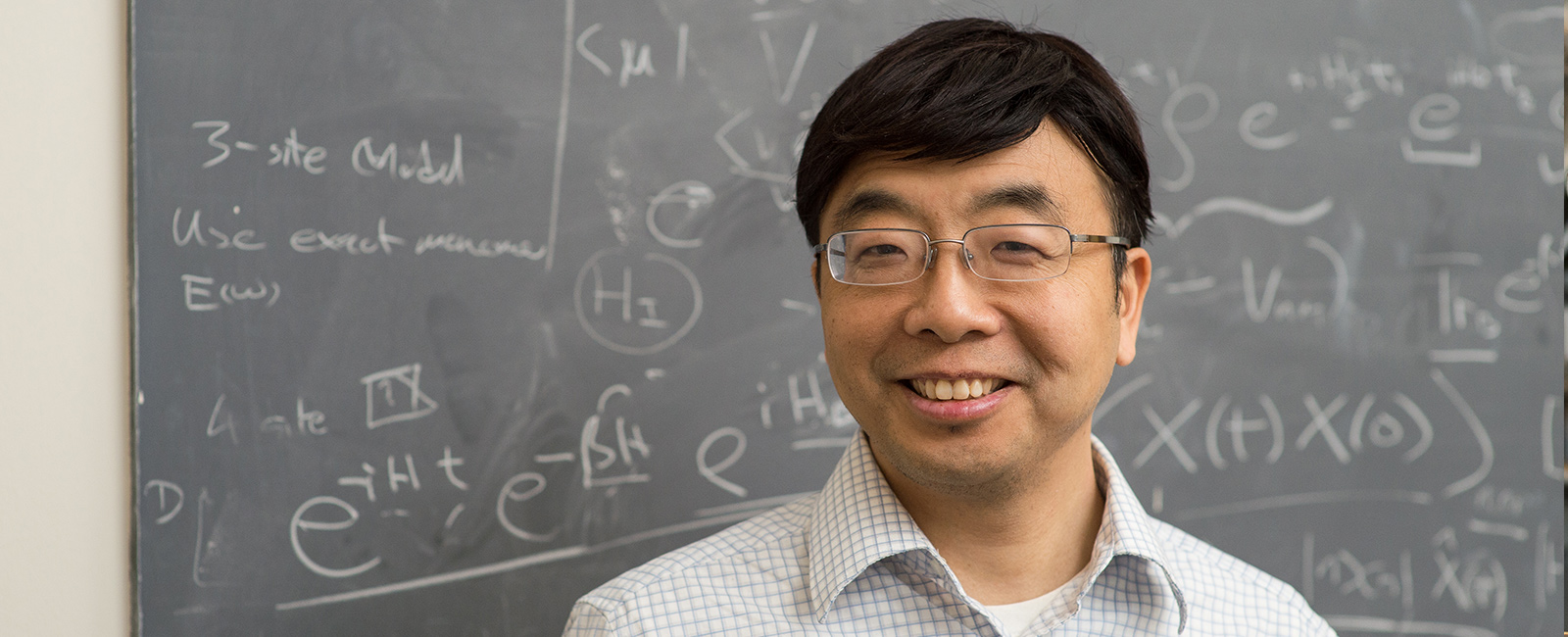Our group develops theoretical models for understanding the structure and dynamics of complex molecular systems. Establishing relationships between these models and experimental observables allows us to explore new ways of describing chemical and biological processes on multiple time and length scales.
Quantum Dynamics
Developed in the 1930s, quantum mechanics remains at the heart of physical chemistry both as a working principle and as a quantitative theory. We are currently investigating two areas: (i) energy transfer and conversion in photosynthesis and (ii) quantum-classical correspondence. To achieve high efficiency in collecting and converting solar energy, photosynthetic systems take advantage of the interplay of quantum coherence, protein environments, and self-assembling structures. Understanding these natural processes in plants and bacteria provides key insights into the design of efficient and robust artificial light-harvesting systems. Employing classical trajectories for the optimal control of energy flow and the characterization of spectroscopic signatures of quantum coherence provides an intuitive means to develop these insights further. Related problems of interest include electron transfer, heat conduction in nano-wires, and vibrational energy transfer in dissipative ABA molecules.
Single Molecule Kinetics
Basic concepts in physical chemistry are taught and understood on the molecular level. Only recently, single-molecule experiments make it possible to detect and monitor dynamic trajectories of individual molecules. To understand these measurements, we focus on two conceptual issues: (i) the nature of the information content of single molecule data and how to best represent this information with mathematically rigorous and physically meaningful models and (ii) the signatures of non-equilibrium steady-states in kinetic networks of enzymatic reactions and in driven processes. In this general area, we also study indicator analyses of conformational fluctuations, Bayesian statistical algorithms for processing single molecule data, and first-principle calculations of single polymer dynamics.
Complex Liquids
Why do colloidal suspensions freeze into the glassy state? How do protein solutions aggregate or crystallize? What is the orientational order of a mixture of short-coils and long polymers? Answering these questions will address important issues in materials and biological sciences and, in effect, inspire further advances in fundamental statistical theory and simulation techniques. In this fascinating pursuit, our projects in recent years include the derivation and generalization of mode-coupling theory for glass transitions; aggregation, crystallization, and pattern formation of spherical particles; guest-host effects in polymeric materials; and dynamic heterogeneity and other non-hydrodynamic effects.
Biomechanics
Mechanical emulation of living beings is an age-old dream and has inspired dramatic advances in biomechanics. Amazingly, macroscopic continuum theories are reliable predictors at the micron or even nanometer scale; however, because biological processes in living organisms are subject to non-equilibrium driving forces and stochastic fluctuations, we need to understand non-equilibrium mechanical processes and identify signatures of deviations from continuum theories at the cellular level. In this quest, we are studying three biophysical processes: mechanical responses of red blood cells, lipid-polymer-membrane interactions, and biomechanical couplings in molecular motors.

